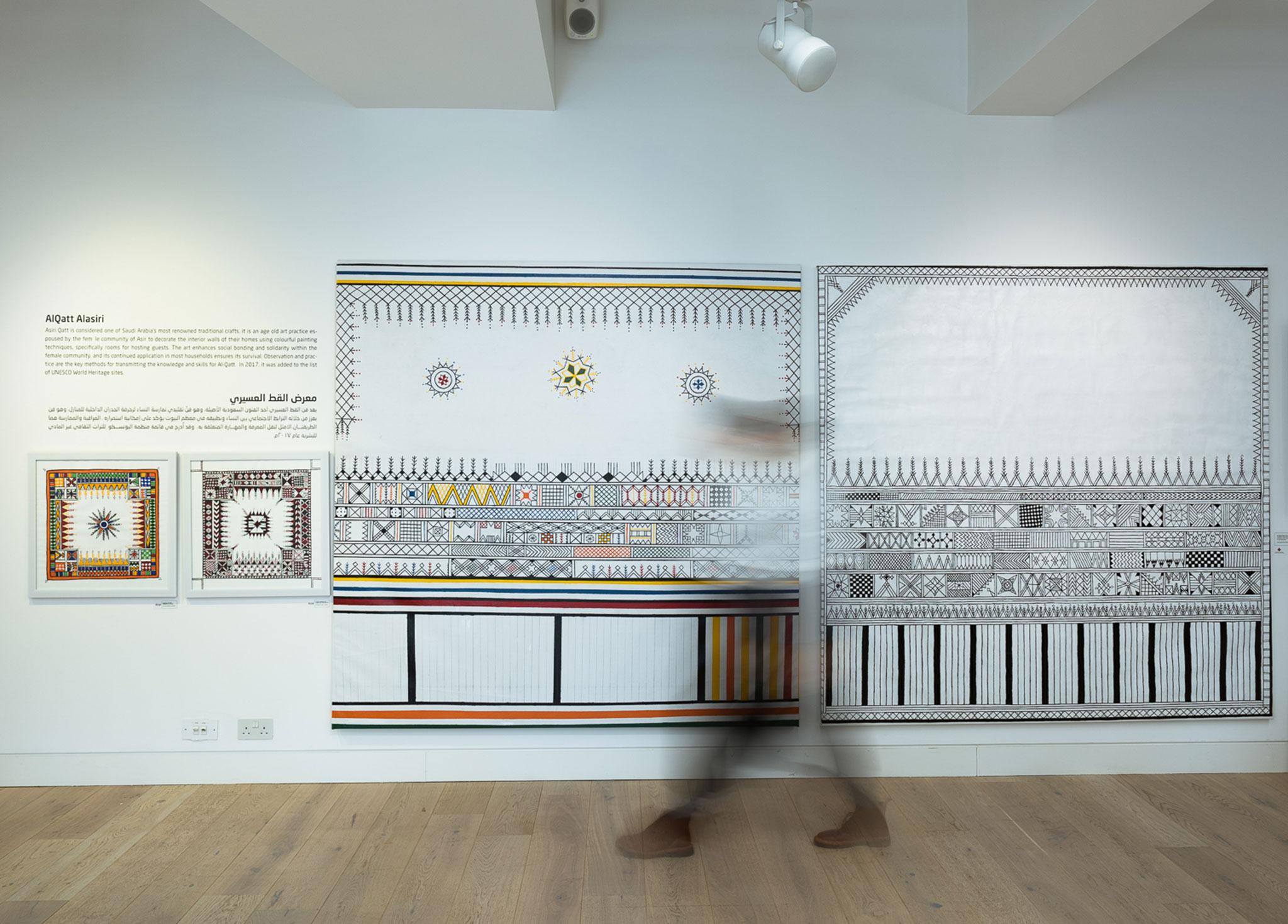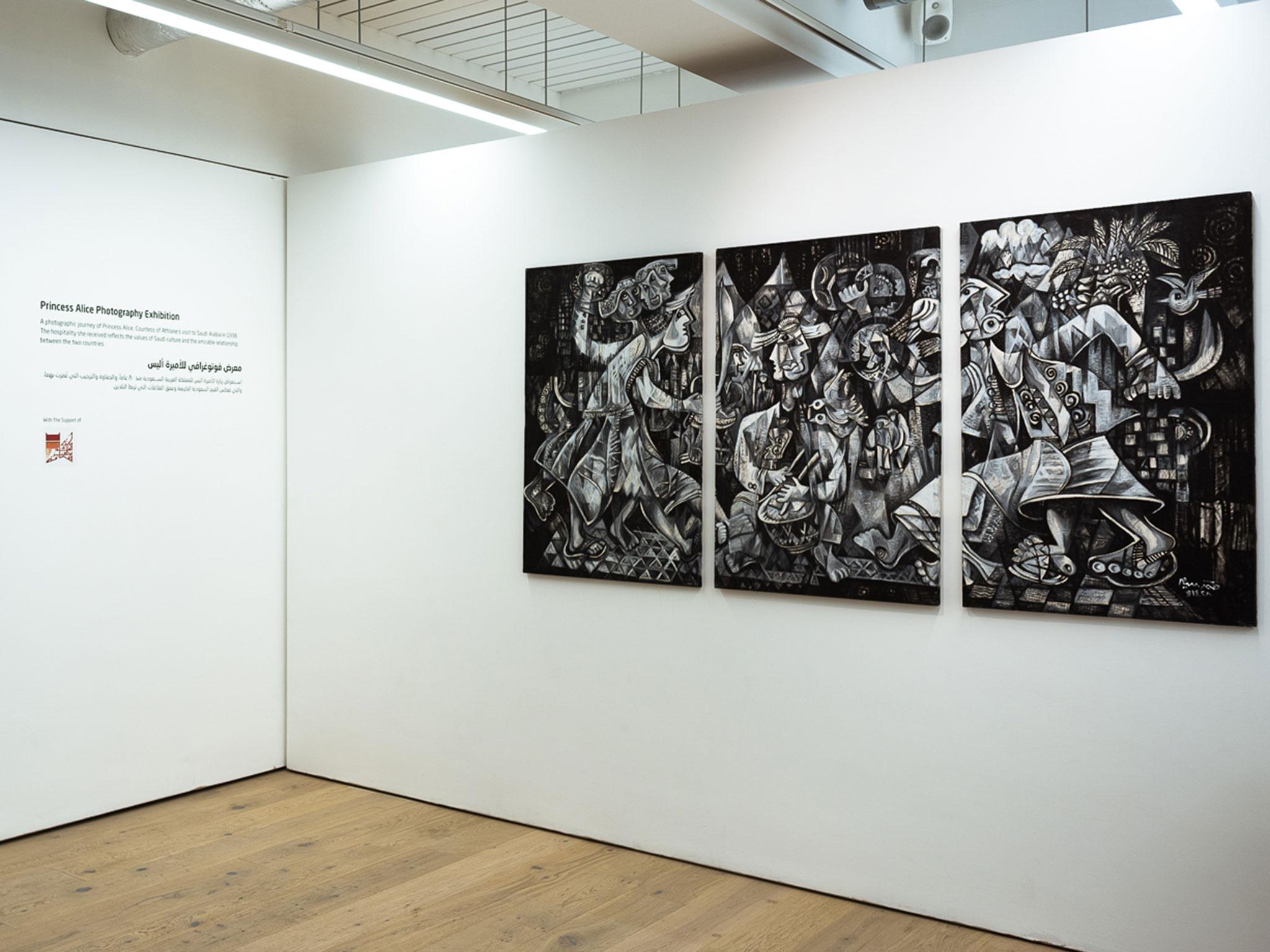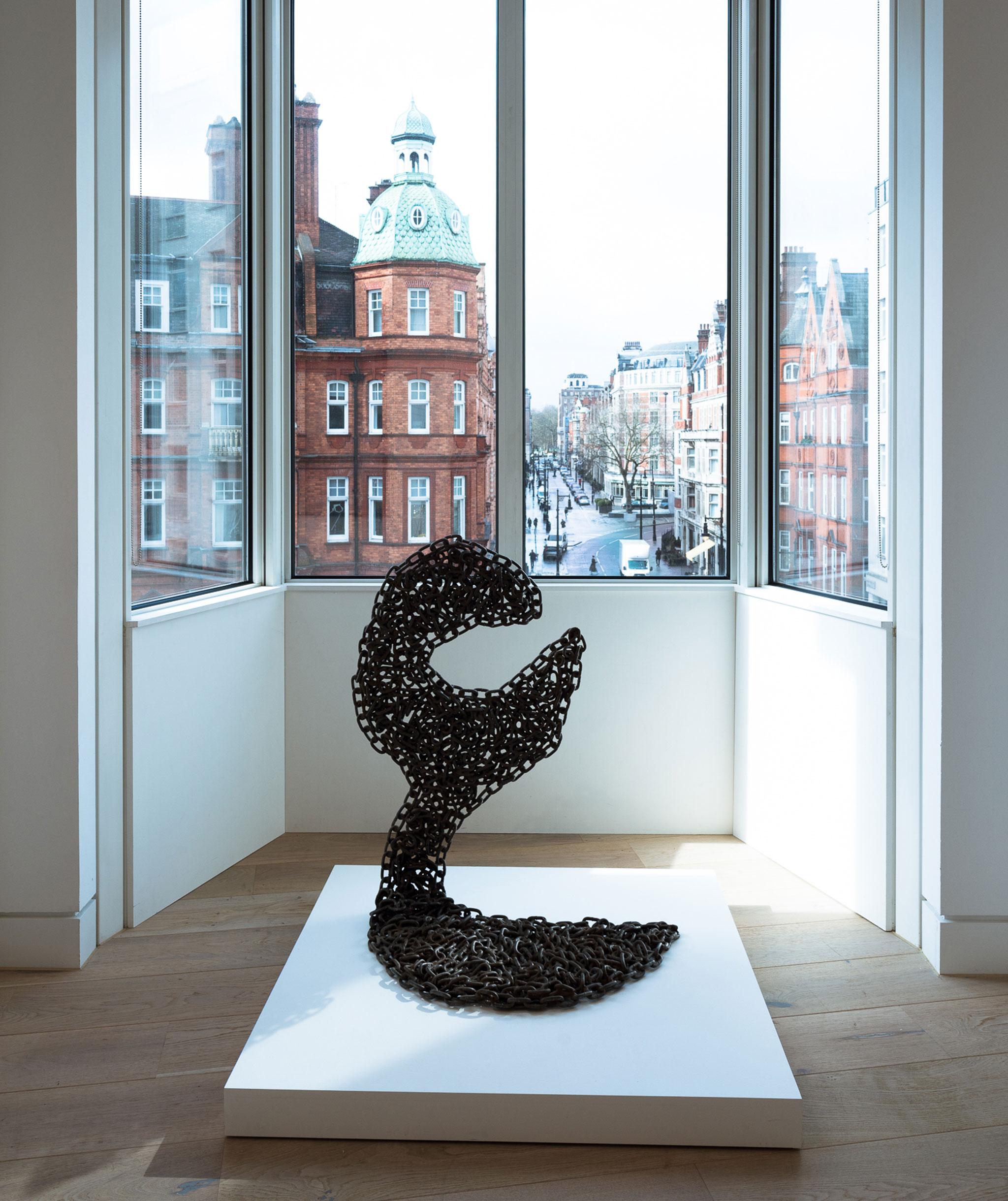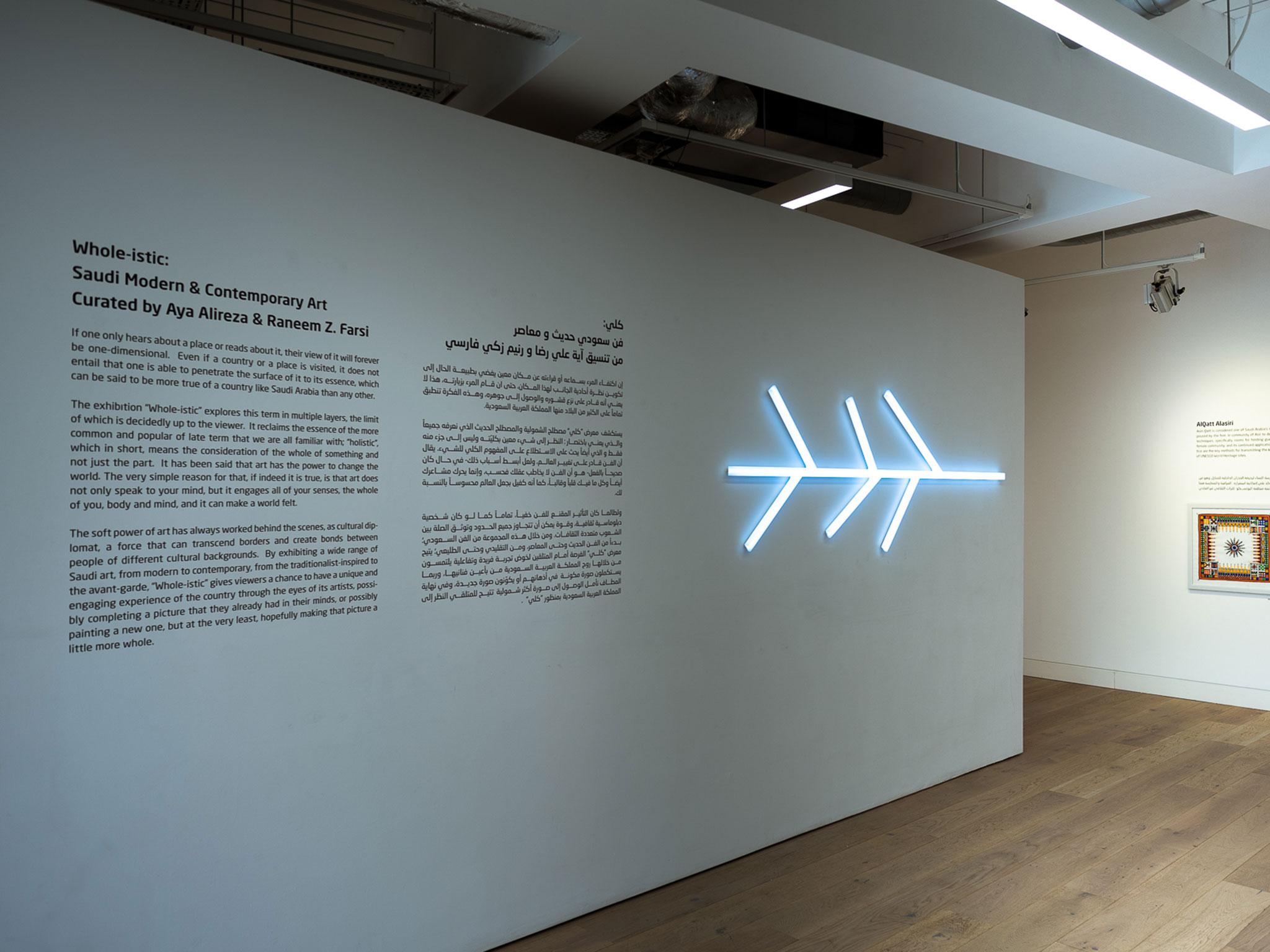How Saudi artists are capturing the spirit of a kingdom in the process of radical reform
‘Saudi Cultural Days’, an exhibition at Phillips auction house in London, explored political and cultural themes through a multitude of mediums, including photography and VR

The visit of the Crown Prince of Saudi Arabia to the UK prompted much discussion here about the kingdom, its economy, its military might, and trading and diplomatic relationships with Britain, as well, of course, as recent moves towards the liberalisation of restrictions against women.
But it’s also the case that a different, but arguably deeper, understanding of a country can come from its arts and culture, not least the contemporary art that is being produced. Just as the Young British Artists of the 1990s gave their unintentional insight into the materialism and narcissism of the times, so any country’s contemporary art is likely to shine a light upon its prevailing social mores.
For that reason, Saudi Cultural Days, an exhibition at Phillips in London to coincide with the visit of the Crown Prince, proved an intriguing insight into this rapidly changing society. The artworks showed not so much the religious imagery that one might expect (though there was certainly some of this) but more a creative struggle with identity, that can take place through a range of media and styles, from traditional textiles to cubism and abstract expressionism.

Those forms, perhaps lazily only associated with the West, have certainly taken hold in Saudi Arabia. Mohammed Siam, one of those artists heavily inspired by cubism, is known, perhaps unhelpfully for him, as “the Picasso of Saudi Arabia”. Yousef Jaha’s abstract expressionism explores natural landscapes. He describes art as “the humanity to which the glories of nature are fused: gleams and layers of colour, form, space and line bending, collecting, intersecting and breaking, quenching their thirst for earth.”
But, in a time of such political change in the kingdom, one looks inevitably at the political rather than the purely aesthetic in Saudi Arabian art. And one encounters struggles to reconcile personal, religious and national identity.
Saudi Arabia is much more a melting pot of different cultures than is sometimes thought in the West. Muhannad Shono is a naturalised Saudi citizen to parents of Chechen and Karachay-Cherkessian descent. His body of work has at its core issues of identity. “Children of Yam” examines immigration and feeling alone and alien from the surrounding community. He does this by dropping ink on to a piece of paper and zooming into that ink to film it moving from place to place, never belonging.
Where there is a perhaps more expected homage to religion, it is executed with contemporary style and panache. In “Shortcut, 2015” Rashed Al Shashai takes the shape said to be the first drawing inscribed in the sand by the Prophet Muhammad, a simple message depicting the straight path of integrity, and three offshoots depicting what it would look like to stray from it. The artist has put the shape in bright LED lights – lighting the path ahead in striking style.

Equally, Moath Alofi’s haunting set of documentary photographs captures desolate mosques, small buildings isolated on barren landscapes, and is said to be “a bridge between the heavens and the earth”.
So these artists are not necessarily straying from the religious iconography which informed their upbringing. But they are exploring it and presenting it in very modern and subtly questioning ways.
With the political liberalisation of strictures on women receiving most attention in the world’s view of Saudi Arabia at the moment, the work of its female artists is particularly pertinent.
Nabila Al Bassam travelled to cities in the kingdom to learn about local women’s traditions and techniques in the production of Al Sadu weaving, local textiles and popular clothing. Choosing women as her inspiration and imbuing her work with vibrant colours, she aims to assert women’s relationship to ancestral art and proclaim its aesthetic beauty.
Dania Al Saleh focuses her work on the use of geometry as a communicative tool, using patterns and colours with mathematic precision and using watercolours to endow them with a translucent splendour.
Dana Awartani’s videos have titles straight out of the collected works of Tracey Emin. “I went away and forgot you. A while ago I remembered. I remembered I’d forgotten you. I was dreaming, 2017” is one such. She too takes Islamic geometry as a starting point, but meshes it with performance, making disturbing connections between the sacred and the contemporary.

Film screenings from emerging filmmakers included one exploring the empowerment of women. And there was an astonishing segment in which one could join, via a virtual reality headset, the masses on the Hajj pilgrimage to Mecca or enter the Medina Mosque, which can hold over one million people.
Upstairs from the artworks there was continuous music-making. I witnessed a young Saudi Arabian band playing their own compositions of jazz-rock fusions, again not necessarily what one might expect.
Ahmed Al Maziad, chief executive of Saudi Arabia’s General Culture Authority, said: “Saudi Arabia has been a melting pot and crossroads of civilisations for 9000 years. Our goal in London is to showcase both our history and contemporary Saudi culture.”
Edward Dolman, chief executive of Phillips, said: “The exhibition and events are being held to mark the visit to London of Crown Prince Mohammad bin Salman Al Saud. We are dedicated to promoting the recognition of culture as vital for human development and are committed to promoting cross-cultural arts education to create an atmosphere that builds respect, knowledge and understanding for the world’s diverse cultural populations.”
Clearly, one can only achieve a very limited “knowledge and understanding” from a small cross-arts survey such as this. And we must wait for a fuller picture of how Saudi artists are responding to the political liberalisation in the country, as well as other aspects of Saudi society, political and social. But even within the confines of a limited look at Saudi cultural output there is enough to be both surprised and intrigued by – not least the range of themes and styles, and the tentative but important exploration of Saudi identity.
Join our commenting forum
Join thought-provoking conversations, follow other Independent readers and see their replies
Comments